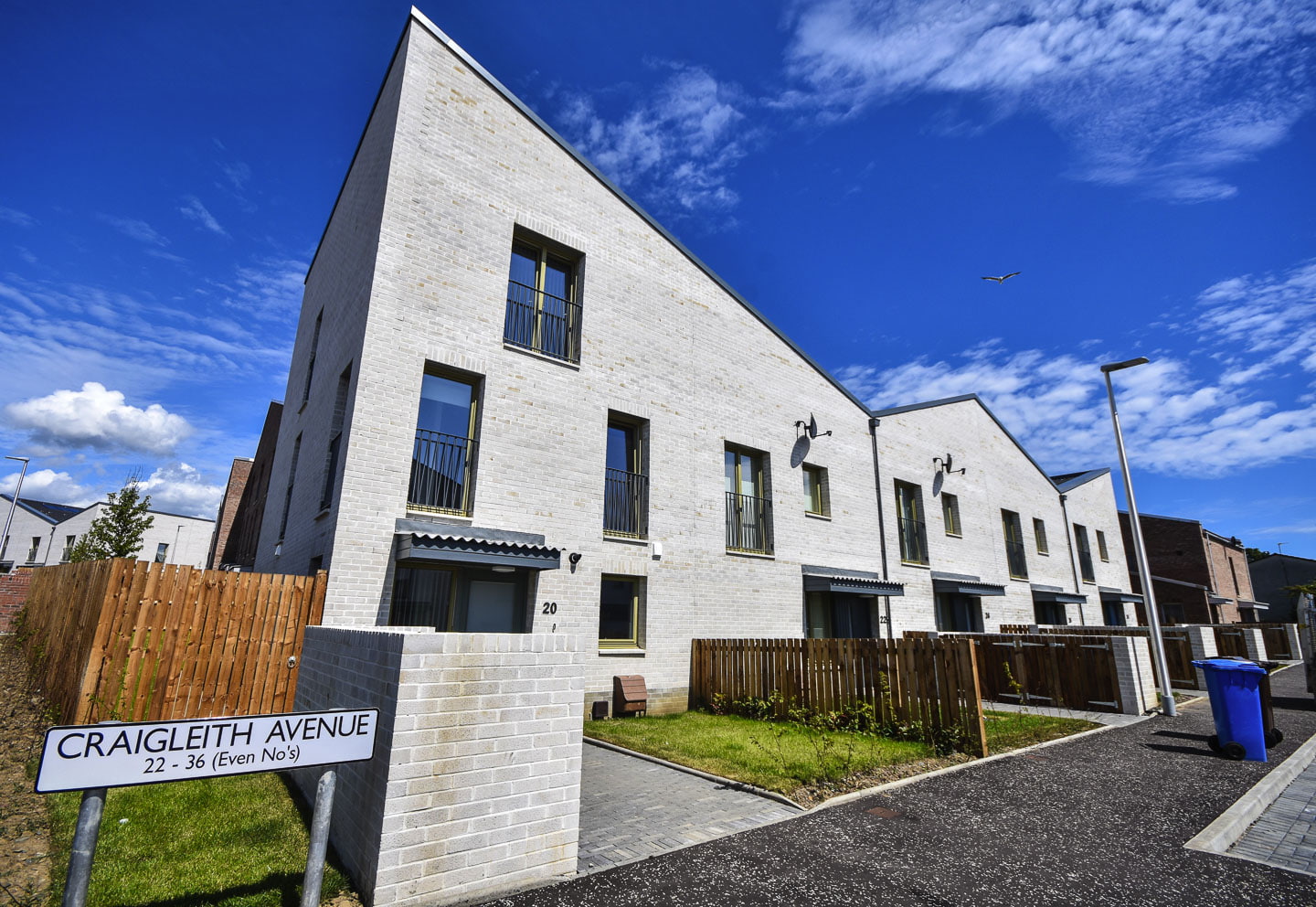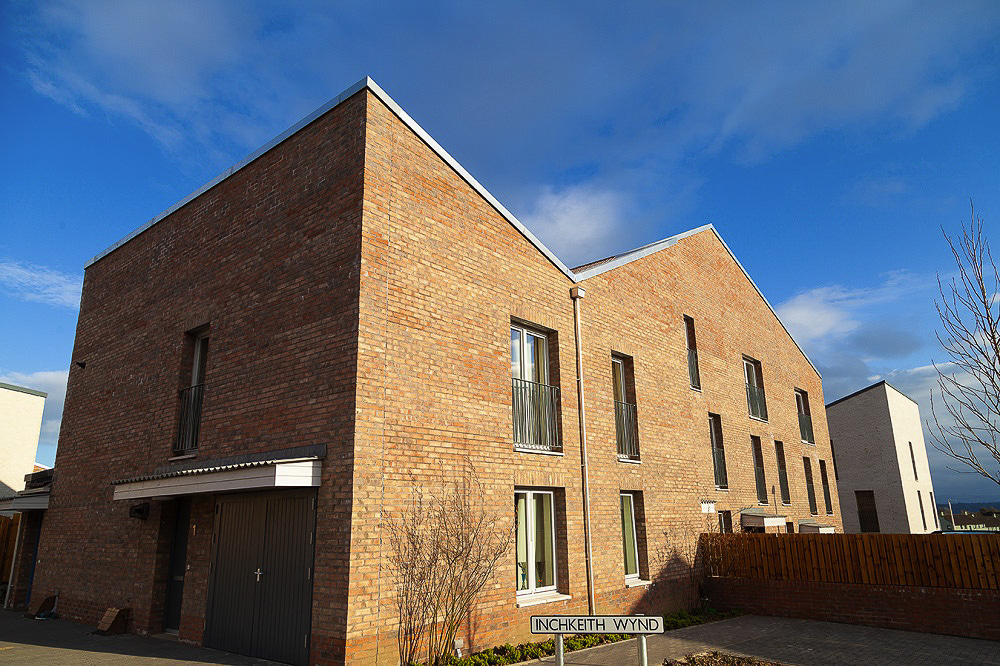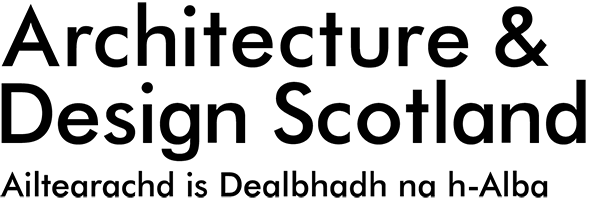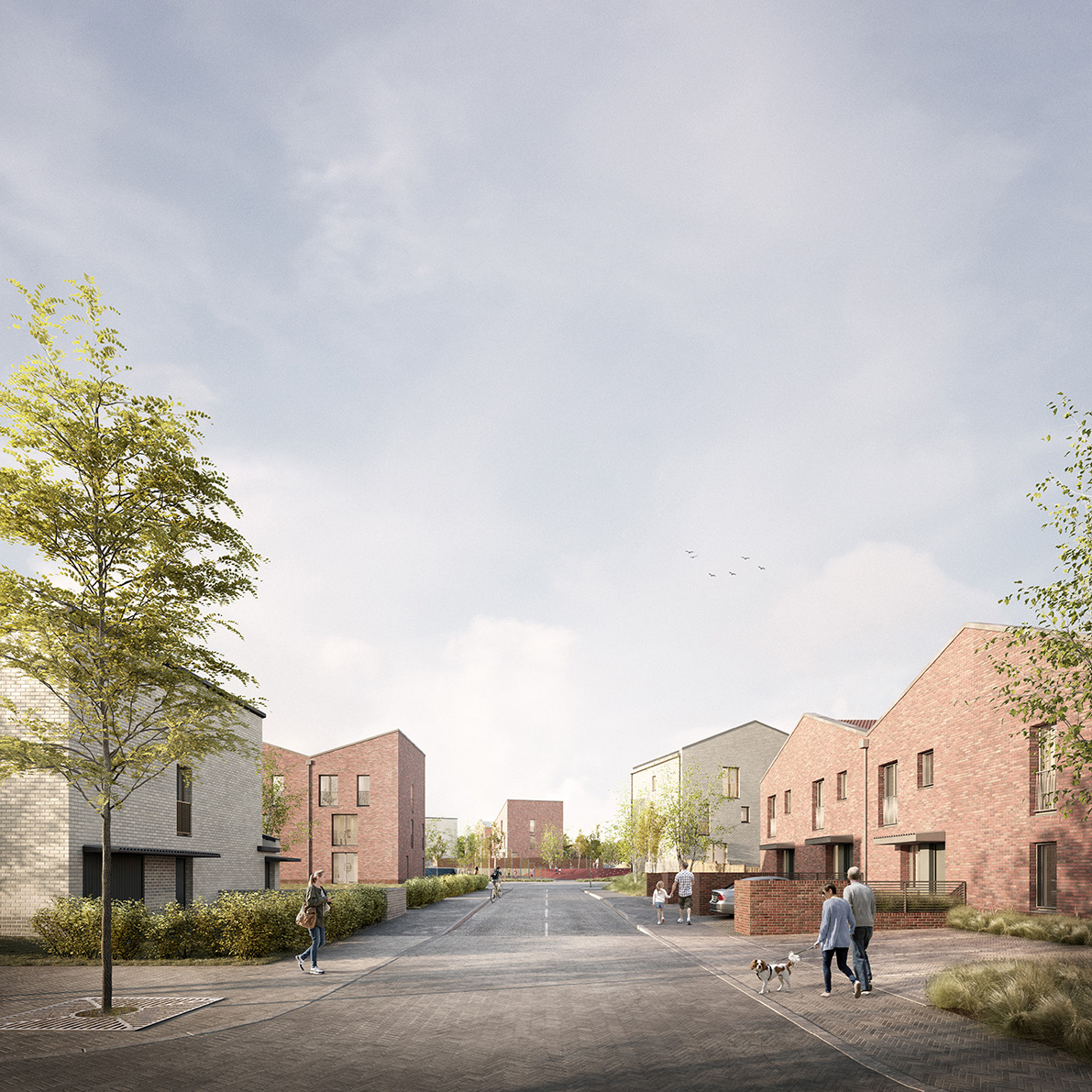The Fraser Avenue neighbourhood in Inverkeithing has seen a reversal of fortunes in recent years. The once-thriving post-war housing estate ranked in the top 15% of the most deprived areas of the country in 2012. But the Fife estate’s once-strong community spirit is re-emerging during a major regeneration.
The project team is aiming to create a new neighbourhood of high-quality, affordable housing, boosting social cohesion from within through improved placemaking and innovative design. Central to the team’s approach is the active involvement of tenants and residents in the design and decision-making process.
In addressing the social side of regeneration, rather than simply building houses, the project is setting a benchmark as a truly sustainable model for new and emerging neighbourhoods. The team includes Kingdom Housing Association (Kingdom), 7N Architects, and Fife Council. This is a case study of the project to date.
What this case study covers:

Involving the community
Am important aim of the project is to promote the involvement of community representatives and returning tenants. This has included:
-
a bus tour of Kingdom’s other new build developments to help tenants decide what they would like to see in the design
-
an initiative involving local children in choosing play equipment for new pocket parks and play areas
-
a series of workshops and consultation events
-
an open day during construction for more than 80 tenants to get an idea of the finished product, meet important Kingdom staff, and ask questions
The project team is also designing pocket parks with the local community. These will be a network of more intimate spaces for play beyond the main village green.
Following the consultation with the community, a series of key principles emerged for Fraser Avenue. These were:
-
shorter, more intimate streets and cul-de-sacs where everyone has their own front door and private garden
-
a mix of house types for a range of people with warm, dry, secure and energy-efficient homes
-
safe walkways, roads and cycle paths and well cared for public space where children can play
-
the relocation of local shops to work better within the wider community
The sense of community engagement towards the new development has already had a palpable impact on one aspect of the construction. The main contractor has reported no problems with security or vandalism.
“We knew that for Fraser Avenue to be a success we needed to take the local community on the journey with us and not just the returning tenants. It was important for us to deliver a project that the community would be proud of, and which would give returning tenants a sense of ownership and a fresh start.”
Community initiatives
There have been several community initiatives since the project began:
Employment and training opportunities
Phase 1 of the regeneration delivered two construction academies, 13 work placements, 10 new jobs and six apprenticeships.
Two candidates from the area secured full time jobs with Campion Homes, the main contractor for the new housing.
One of them was a returning tenant. He said: “This was a great opportunity to move into construction. It was great being part of the team building my new home.”
Community textile project
The community made textile artwork to be installed at the construction site to soften the view for neighbours looking onto the area. Kingdom and the council commissioned the project.
Residents taught other community members how to knit and crochet in an example of intergenerational community engagement and shared learning.
Financial advice
Tenants were given advice and support to help them make an informed decision about their move, to manage their money, and to sustain a new tenancy.
“Community and tenant buy in is key to the project’s success. A range of activities need to be carried out in addition to construction to address the social side of regeneration; new homes on their own won’t change the area longer term or create a strong sense of community.”
Interiors
Layout flexibility has been provided, with each tenant being able to choose between a more traditional plan of individual rooms or an open plan layout. This choice also extends to details such as front door design and colours, through to kitchen units, worktops, handles, shower screens and wall colour.
This approach encourages occupants from the outset to take ownership and bring individuality to their home.
Ewan Anderson of 7N Architects says: “There was quite a number of original Fraser Avenue tenants who had very specific needs in terms of the family size or disabled needs. A lot of the homes are bespoke to specific needs.”
This idea, where there is no difference in the approach taken for private and affordable housing, has been a particular success with tenants.
Resident feedback
Based on responses received to date, tenants like having their own gardens, front doors and extra space. Many tenants have also commented on how warm their new homes are.
One said: “I love my new home. It has made our lives so much easier. It’s homely, cosy and the kitchen is more spacious than in our old home, which means we can enjoy family meals together.”
Some things people do not like about their new homes include the design of the canopies, some of the living room sizes, and not all terraced houses having their own back garden gates. These issues are being addressed for the development’s second phase, which is taking place from April to summer 2021.
“It’s about being a perfect wee happy healthy family and to you all I am truly grateful that I’m in the property. Plus it’s my dream home with my own garden, nice community, shops and a park planned in the next phase. It’s so exciting to see the development and know it’s focused on family living. Thank you.”
Placemaking
The Fraser Avenue regeneration is envisaged as a new garden suburb development of comfortable, lower density, secure terraced homes with front and back gardens for residents.
Emphasis is on well-planned, open green space within easy walking distance and tree-lined public streets.
The development follows similar principles of the garden city movement, as exemplified in the neighbouring Rosyth Garden Village of 1916.

Building fabric and sustainability
The new terraced housing has been designed in compliance with the silver level of sustainability in the Building (Scotland) Regulations 2015.
This is an improvement on the base level of the regulations. It offers substantial benefits in a range of sustainability aspects.
The renewables strategy also includes:
-
solar panels on the roofs with a capacity of 0.5kWp
-
the ‘fabric first’ principle, which aims to maximize airtightness and the building fabric’s thermal efficiency
-
‘breathable wall’ build technology instead of plastic vapour barriers which trap moisture inside the building’s interiors
The aim is that the buildings will be warmer for longer in cold weather, cooler in hot weather, and dry and breathable.
This will help ensure the long-term health of the building fabric. This is something most conventional insulation systems normally overlook.
“If the system is going to be more expensive to build and has limited benefits to the end user, people will think twice about it. But if there are significant benefits to the end user, I think we’ve got to try to consider using it going forward.”
An invested community
The regeneration of Fraser Avenue can be seen as a tangible model for the delivery of new and replacement affordable housing. It breaks from the stigma of the past to create a place populated by people who want to rebuild and feel invested in the community in which they live.
It has achieved:
-
a high tenant return rate
-
a high level of interest from neighbouring areas, reducing vacancies and the time it took for the client to get a return on investment
-
real change in the lives of tenants including improvements in health, wellbeing and finances, children playing in the streets, and people engaging with their neighbours
Housing to 2040: Fraser Avenue
In 2019, the Scottish Government looked at what Scotland’s homes and communities should look and feel like in 2040, and the options and choices to get there.
We supported the Housing to 2040 consultation with a series of workshops, interviews and an exhibition. Our visit to Fraser Avenue for the consultation is shown in this video. Read more about our work on Housing to 2040.
Header image credit: 7N Architects
Are you working on a housing project?
Get in touch with us to see how we can support the process.

